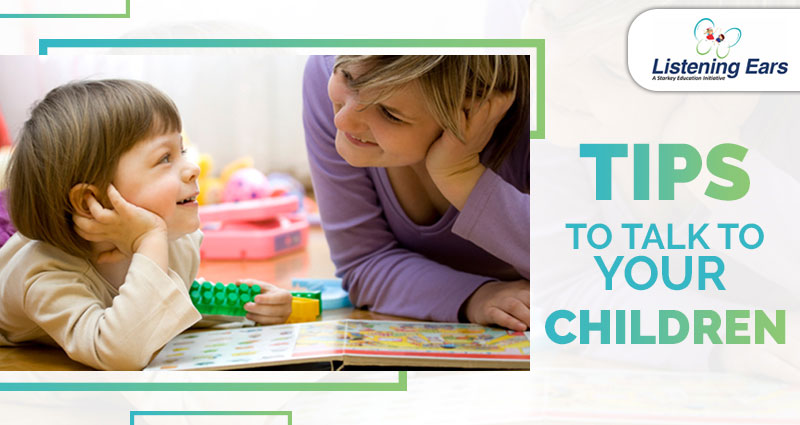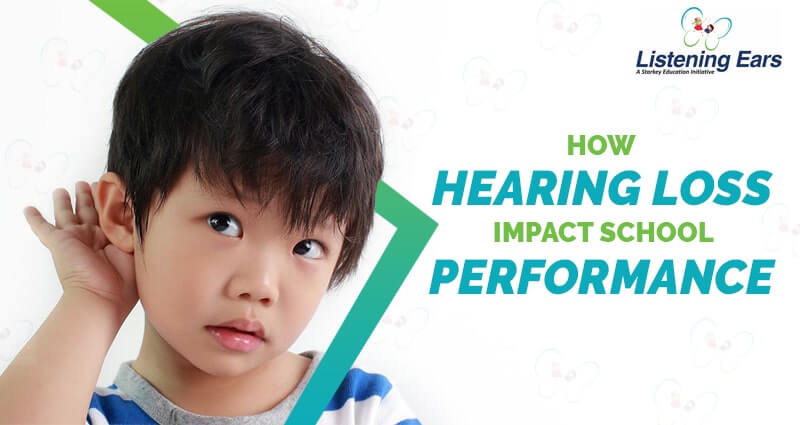Ways to Promote the Language and Communication Skills of Infants and Toddlers
How to Help a Stuttering Child
March 7, 2017Normal Speech & Language Development and Signs of Language Disorder
March 17, 2017Early language and communication skills are crucial for children’s success in school and beyond. Language and communication skills include the ability to understand others (i.e., receptive language) and express oneself (i.e., expressive language) using words, gestures, or facial expressions. Children who develop strong language and communication skills are more likely to arrive at school ready to learn.1 They also are less likely to have difficulties learning to read and are more likely to have higher levels of achievement in school.2
During the first years of life, children’s brains are developing rapidly and laying the foundation for learning. The interactions that children have with adults influence how children develop and learn.3 As a result, early childhood educators have a prime opportunity to provide children with interactions that can support children’s growth and development, particularly their language and communication skills.
As past research shows, when teachers provide children with higher levels of language stimulation during the first years of life, children have better language skills.4,5 When teachers ask children questions, respond to their vocalizations, and engage in other positive talk, children learn and use more words. A study found that one third of the language interactions between teachers and children were the type that support children’s language development, while the other two-thirds included less complex language such as directions, general praise, and rhetorical questions.6 Promoting more high-quality language interactions between children and adults provides children with the kinds of experiences that can foster their growth in language and communication.
This guide describes 10 practices that early childhood educators can use to support the development of language and communication skills of infants and toddlers. Because research supports the importance of adult-child interactions for infants and toddlers,5 the practices are designed to be done one-on-one or in small groups. Each practices draws upon the types of interactions that research suggests promotes language and communication skills. These interactions include:
- Responding to children’s vocalizations and speech
- Engaging in joint attention with children
- Eliciting conversations with children
- Talking with children more
- Using complex grammar and rich vocabulary
- Providing children with more information about objects, emotions, or events.
These interactions benefit children from a variety of language and cultural backgrounds, including children who are dual language learners. Children who are dual language learners may sometimes feel socially isolated and have difficulty communicating their wants and needs.7 Educators may find the practices presented in this guide useful for helping dual language learners feel more socially connected and communicate better. Educators interested in learning more about supporting dual language learners will find additional information in the resources presented at the end of the guide.
Overview of 10 Practices to Promote Language and Communication Skills of Infants and Toddlers
| Practice | Description |
| 1. Get Chatty | Engaging in conversations with children |
| 2. Be a Commentator | Giving descriptions of objects, activities or events |
| 3. Mix It Up | Using different types of words and grammar |
| 4. Label It | Providing children with the names of objects or actions |
| 5. Tune In | Engaging in activities or objects that interest children |
| 6. Read Interactively | Using books to engage children’s participation |
| 7. Read It Again and Again and Again! | Reading books multiple times |
| 8. Props, Please! | Introducing objects that spark conversations |
| 9. Make Music | Engaging in musical activities |
| 10. Sign It | Using gestures or simple signs with words |
Each practice is presented with a description of the practice, research evidence that supports the use of the practice, and examples of how educators may use the practice with infants and toddlers. Although each practice is presented separately, many of the practices can be used in combination with each other. For example, educators can practice focusing on children’s interests (Practice #5, “Tune In”) while providing a running commentary (Practice #2, “Be a Commentator”) and labeling the names of objects (Practice #4, “Label It”).
At the end of the guide is a list of resources that may be useful for finding more information on supporting the language and communication skills of infants and toddlers. These resources include books, articles, and websites that contain more detailed information on the practices presented in the guide.
The practices presented in this guide can be used when working with any child. Educators should keep in mind, however, that children develop at varying rates and differently depending upon a number of factors, such as personality and age. These factors and home language exposure affect children’s development of language and communication skills. By using these practices early childhood educators can provide all children with the rich language exposure and opportunities children need to enhance their language and communication skills.
Creating Language-Rich Environments
Learning to communicate effectively is not a simple task. To become competent communicators, children benefit from language-rich environments. The richness of the language environment in children’s homes is linked to children’s language and literacy skills. Likewise, the school environment can be a powerful force in helping children learn to communicate.
Good schools for young children help them learn to communicate by:
- structuring a safe environment that lets children know that they, and their ideas and ways of communicating them, are valued and respected;
- planning the physical environment in ways that promote communication;
- Fostering the conventions of communication, helping children learn to look, to take turns, and to negotiate verbal conflicts.
Providing Security
“I can’t seem to reach Alberto,” complains a teacher. “When I ask him a question, he won’t even look at me. He acts like he hasn’t heard me at all.” Even though children all over the world learn to communicate naturally, learning to communicate effectively takes skill and practice. Many children, like Alberto, may not feel secure enough to express themselves freely. Children need to learn that what they say will be valued and clearly acknowledged.
Each of us needs someone we can really talk to. “I tell her things I can’t tell anyone else. I know she won’t laugh at me or criticize,” said a teacher about her best friend. Everyone, especially children, must feel a measure of safety and security before they can express themselves freely and openly.
You can build this security and safety by accepting the language children bring to school with them. Children do not learn language by being corrected or criticized. For example, Brooke runs to the classroom and excitedly tells the teacher, “Teacher, teacher, I seen a deer on the way to school.” The teacher responds, “My name is not Teacher, call me by my name, Ms. Sally.” Brooke begins again, with less enthusiasm, “Ms. Sally, I seen a deer. It was a real deer.” The teacher says, “Say, ‘I saw a deer,’ not ‘seen a deer.'” This time, with all the excitement gone, Brooke says, “Yes, I seen a deer.” The teacher corrects Brooke again and again, telling her to say saw, not seen, until Brooke says nothing in reply. Brooke does not learn the difference between saw and seen, but she does learn that her way of talking is not accepted.
Children learn correct grammar by hearing it being used. To foster Brooke’s willingness to communicate, as well as teach the correct use of saw and seen, the teacher could focus on Brooke’s exciting news, saying, “Oh, you saw a deer! Tell me about it.” Repeating what the child has said, even when you change some of the child’s words, is reinforcing. Children who are reinforced for sharing their ideas will share them again.
REFERENCES:
https://www.scholastic.com/teachers/articles/teaching-content/helping-children-communicate/



